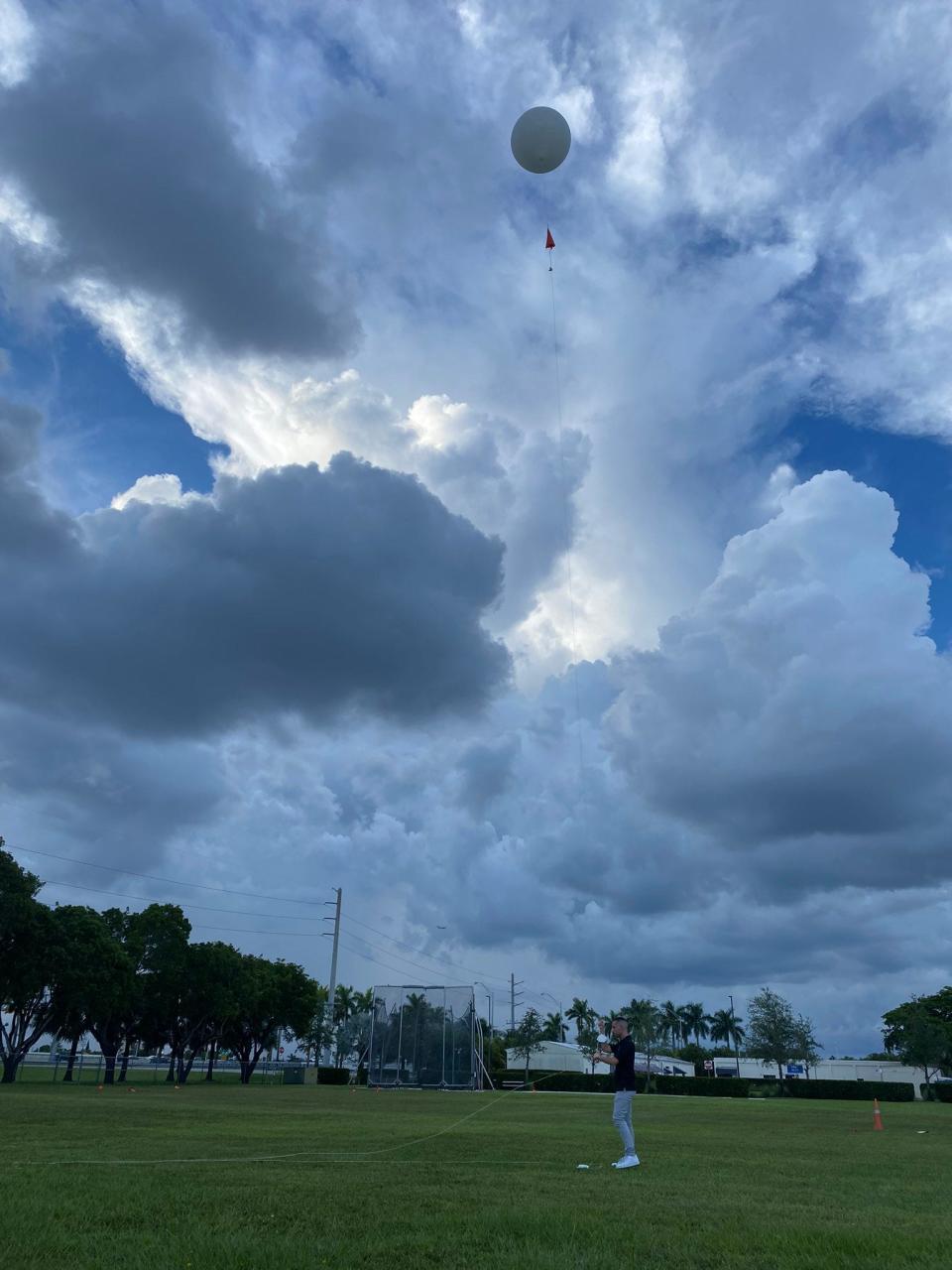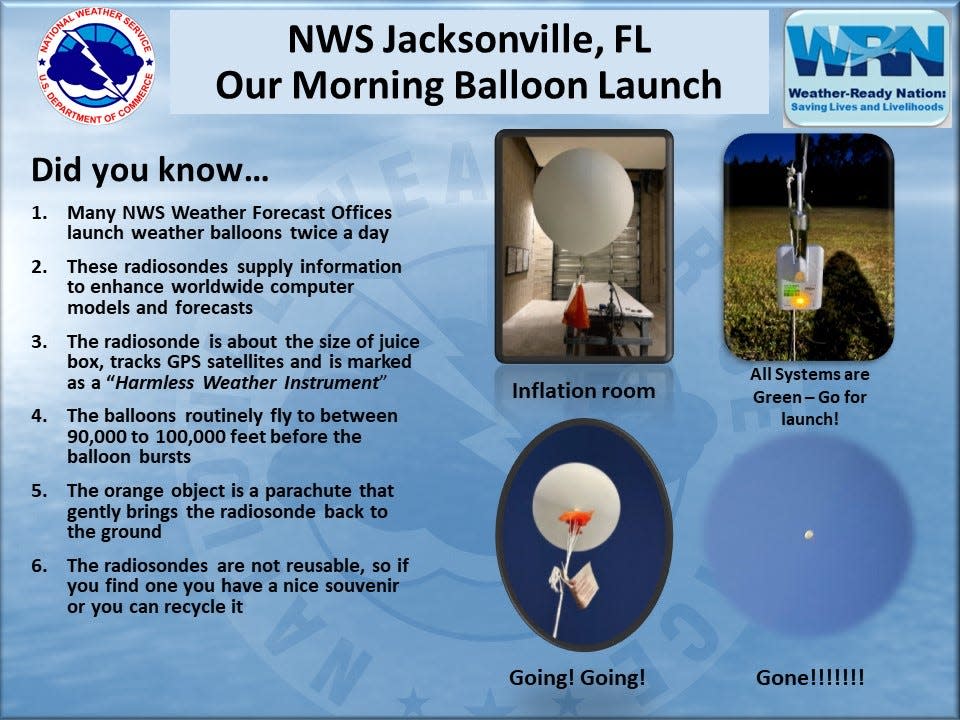Don't mistake NWS weather balloons for Chinese spy balloon
A Chinese spy balloon spotted over American skies has people across the country turning to Google to find out more.
The balloon was spotted over Montana, at which time Pentagon officials considered shooting it down.
The decision was made to not shoot it down because of concerns debris could injure Americans on the ground or destroy property, according to a Defense Department official.
Chinese spy balloon: US considered shooting it down
The North American Aerospace Defense Command is continuing to track and monitor the balloon.
Balloons aren't all that unusual in American skies. The National Weather Service releases weather balloons twice a day, every day from almost 900 locations around the world.
How high do weather balloons fly and for how long?

Balloon flights last for around two hours, can drift as far as 125 miles away, and rise up to over 100,000 feet — about 20 miles.
How big are NWS weather balloons?
The balloons start out measuring about 6 feet wide before they are released. They expand as they rise to about 20 feet in diameter.
Is anything attached to the balloons?
Absolutely smooth launch @NWSJacksonville. One of those few jobs left in meteorology that don’t require you to sit behind a computer. pic.twitter.com/b1QZkniC2x
— Robert Speta (@RobertSpetaWX) August 2, 2022
An instrument called a radiosonde — which is about the size of a juice box — is attached to the balloon to measure pressure, temperature and relative humidity as it ascends into the atmosphere. These instruments will often endure temperatures as cold as -139 degrees and wind speeds of almost 200 mph.
A transmitter on the radiosonde sends data back to tracking equipment on the ground every one to two seconds. By tracking the position of the radiosonde, forecasters can calculate wind speed and wind direction. The radiosonde is powered by a small battery.
The radiosonde is marked as a "harmless weather instrument."
When the balloon bursts, what happens?

An orange object attached to the radiosonde is actually a parachute that brings the instrument gently back to earth.
What should you do if you find a radiosonde?
If you find one, you "have a nice souvenir or you can recycle it," according to the National Weather Service in Jacksonville.
But if you'd like to return it to the NWS, there is a postage-paid mailbag and instructions on the instrument.
What if the balloon is partially inflated? Is it dangerous?
Yes. The gas used inside the balloon may be flammable hydrogen. Keep away and contact the local fire department.
This article originally appeared on Florida Times-Union: NWS launches 2 weather balloons daily. Here's how you can identify them

